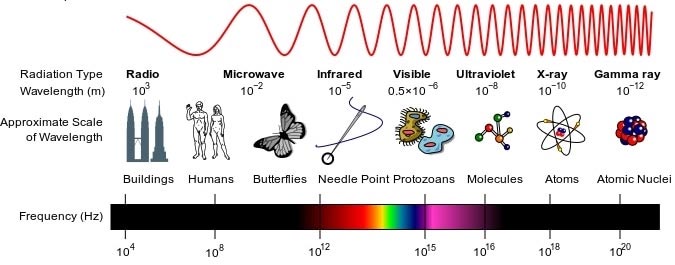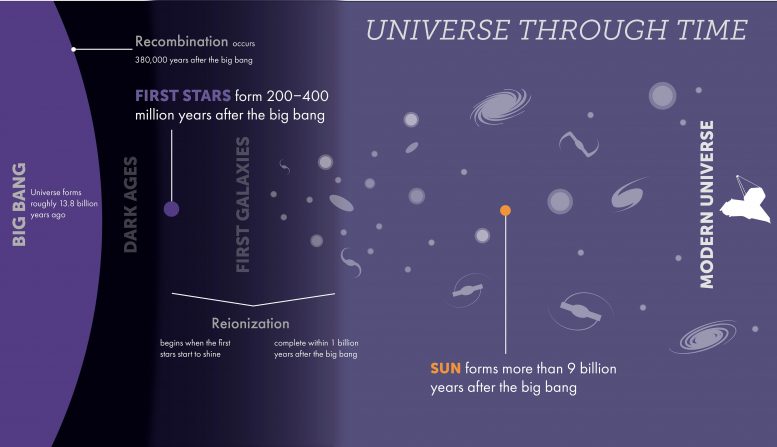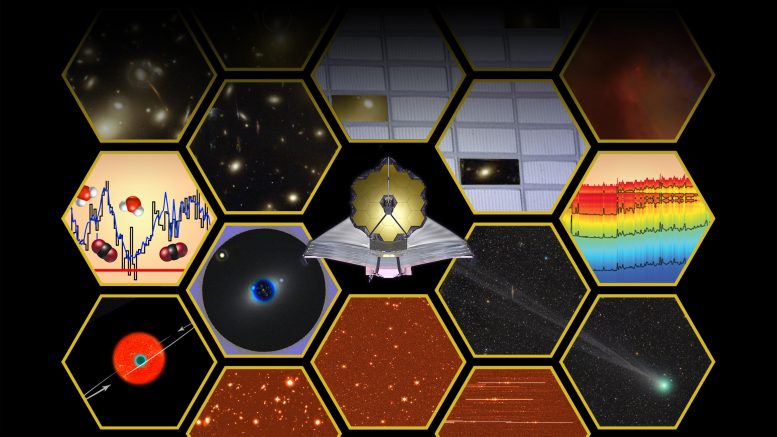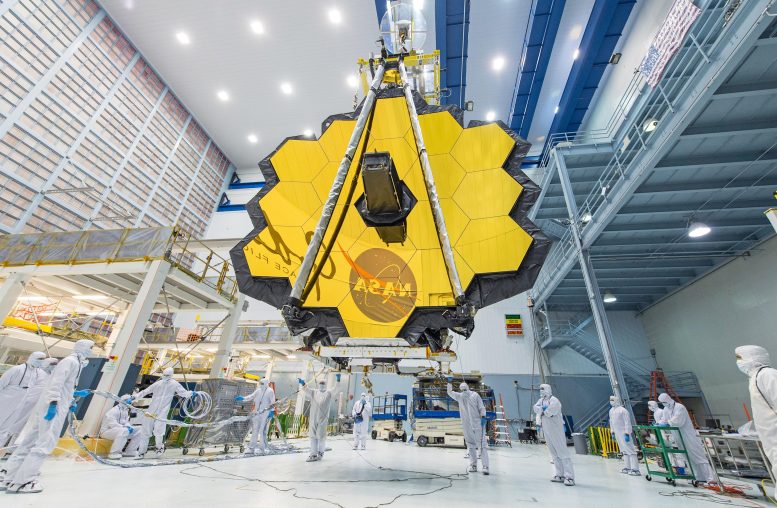Artist’s impression of the NASA/ESA/CSA James Webb Space Telescope. Credit: ESA, NASA, S. Beckwith (STScI) and the HUDF Team, Northrop Grumman Aerospace Systems / STScI / ATG medialab
Some have called
The Universe went through a period of time known as the Dark Ages before stars or galaxies emitted any light. Credit: STScI
The ‘Dark Ages’ of the universe
Excellent evidence shows that the universe started with an event called the Big Bang 13.8 billion years ago, which left it in an ultra-hot, ultra-dense state. The universe immediately began expanding after the Big Bang, cooling as it did so. One second after the Big Bang, the universe was a hundred trillion miles across with an average temperature of an incredible 18 billion F (10 billion C). Around 400,000 years after the Big Bang, the universe was 10 million light years across and the temperature had cooled to 5,500 F (3,000 C). If anyone had been there to see it at this point, the universe would have been glowing dull red like a giant heat lamp.
Throughout this time, space was filled with a smooth soup of high energy particles, radiation, hydrogen and helium. There was no structure. As the expanding universe became bigger and colder, the soup thinned out and everything faded to black. This was the start of what astronomers call the Dark Ages of the universe.
The soup of the Dark Ages was not perfectly uniform and due to gravity, tiny areas of gas began to clump together and become more dense. The smooth universe became lumpy and these small clumps of denser gas were seeds for the eventual formation of stars, galaxies and everything else in the universe.
Although there was nothing to see, the Dark Ages were an important phase in the evolution of the universe.

Light from the early universe is in the infrared wavelength – meaning longer than red light – when it reaches Earth. Credit: Inductiveload/NASA
Looking for the first light
The Dark Ages ended when gravity formed the first stars and galaxies that eventually began to emit the first light. Although astronomers don’t know when first light happened, the best guess is that it was several hundred million years after the Big Bang. Astronomers also don’t know whether stars or galaxies formed first.
Current theories based on how gravity forms structure in a universe dominated by dark matter suggest that small objects – like stars and star clusters – likely formed first and then later grew into dwarf galaxies and then larger galaxies like the
This artist’s illustration represents the scientific capabilities of NASA’s James Webb Space Telescope. Both imaging and spectroscopy will be central to the Webb mission. Credit: NASA, ESA, and A. Feild (STScI)


